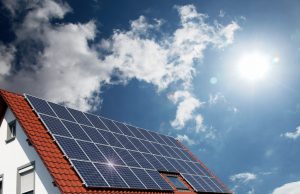
When the cold weather approaches, metal buildings face unique challenges in maintaining comfort and energy efficiency. When the temperature drops outside, you know the same is going to happen inside. In fact, for most metal buildings, there’s a dramatic loss of heat.
Know that there are preparations you can make for the winter that can change this situation. We’re talking about installing insulation. In this guide, we’ll walk you through the essential tips and strategies for insulating your metal structure and preparing it for the winter chill. Say goodbye to sky-high heating bills and hello to a cozy and efficient space!
Understanding the Challenges of Cold Weather Insulation
It’s no secret that cold weather can be harsh, especially on metal structures. Without proper insulation, your building can quickly become a freezer. So, what are the unique challenges that cold weather presents when it comes to insulating metal buildings?
For one, metal conducts heat efficiently, meaning it can easily transfer heat out of the building. Additionally, metal buildings are prone to condensation and moisture build-up, which can lead to mold and structural issues. Inadequate insulation doesn’t just mean discomfort; it can also mean costly repairs down the line.
But don’t fret, because with the right insulation strategies, you can conquer these challenges and enjoy a toasty winter retreat.
Types of Insulation Suitable for Cold Weather
Before we dive into the nitty-gritty of insulation, let’s talk about your options. There are several types of insulation materials you can use to keep your metal building warm in the winter.
Fiberglass Insulation: A popular and cost-effective choice. It’s easy to install and has decent R-values, making it a good all-around solution.
Spray Foam Insulation: This high-performing insulation provides an airtight seal, ideal for preventing drafts and moisture intrusion. It’s great for tight spaces.
Reflective Insulation: Perfect for reducing radiant heat transfer. It consists of layers of foil or other reflective materials.
Note that you should always pay attention to the company you’re buying insulation from. You need to ensure that they’re reputable and trustworthy. Otherwise, you could end up buying poor insulation that doesn’t work for your metal building. For example, BlueTex Insulation is known for its quality metal insulation products. You can check out their website for yourself and see what options they have for your property.
Now that you know your options, it’s time to consider what’s best for your metal building. The choice will depend on various factors like climate, building size, and your specific needs. So, let’s figure out your building’s unique insulation needs.
Assessing Your Building’s Insulation Needs
Every building is going to be different. This means that the insulation is going to be different too. Indeed, you have to figure out what’s going to be the best for your situation. Let’s take a look at some key factors to consider:
Climate: The climate in your region plays a significant role in determining your insulation needs. Harsher winters will require more robust insulation solutions. Consider this carefully before making a purchase.
Building Size: Larger buildings naturally require more insulation. Consider the square footage of your space when planning your project. Indeed, this is an element that’s going to have an impact on your budget.
Intended Use: Think about how you’ll be using your metal building. Is it a workshop, a storage area, or a living space? Different uses may require different insulation approaches. Buying the right one now means that you can use your metal building all year round.
Insulation Thickness: The thickness of your insulation is crucial. Thicker insulation typically offers better thermal performance, but it may also affect your available interior space.
Remember, the goal is to strike a balance between effective insulation and maintaining the functionality of your space. Take some time to assess your building’s specific needs before jumping into the insulation project.
Tips for Effective Cold Weather Insulation
Now that you’ve got a handle on what your metal building needs, it’s time to roll up your sleeves and start insulating. We’ll share some practical tips for insulating the roof, walls, and foundation, ensuring that winter’s chill stays outside where it belongs.
Roof Insulation: The roof is a significant source of heat loss. Consider adding insulation above the roof deck to create a thermal barrier. You can choose from a variety of materials like fiberglass or spray foam.
Wall Insulation: Insulating your walls can be a bit trickier. If your metal building has a cavity wall, you can opt for traditional insulation methods. If not, you may need to install insulation boards or reflective insulation directly to the walls.
Foundation Insulation: Don’t forget about the foundation. This is where cold can creep in. You can insulate the foundation by adding rigid foam board insulation or installing a continuous thermal barrier.
Sealing the Cracks: Drafts are your enemy in cold weather. Be diligent about sealing gaps, cracks, and joints. Weatherstripping, caulking, and foam insulation can help.
Note that you can install insulation by yourself. If you have some experience and the right tools, this is a DIY project you can take on. Of course, this will depend on your expertise, how much time you have and how big your metal building is. Know that some companies where you can buy insulation will give you guides on how to install it.
The other option you have is to hire professionals. This can work better if your on a time limit, or you don’t have a lot of experience with insulation. Just note that this is going to be the costlier option for your metal building.













